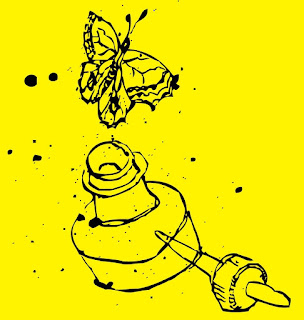It's tempting to dive into art supplies and just start creating willy-nilly. And if that works for you, by all means do it. For me, it has often led to frustration and an awful feeling of utter failure...not to be melodramatic or anything. The sage advice to make value plans, color studies, technique samples, and so on has not been my usual procedure. Now that I'm back in art school (the home school variety) for the last few months, my studio contains a growing pile of test pieces.
The general goal is to figure out a way to combine drawing, painting, and fabric to make artwork using reality as a jumping off point for improvisation.
Making color charts has been very useful. This one is for my stash of Neocolor 2 water-soluble wax crayons. Other media that can work with fabric with varying results include Inktense pencils, water soluble colored pencils, acrylic paints and inks, pastels, and so on.
Another batch, am liking these better. In general some samples utilize Lutradur (non-woven polyester), some are typical quilting cottons, also have experimented with paper laminated onto fabric. Some are collaged with acrylic gel onto panel, others are sewn together like a quilt. Re the quilted ones, I've decided the "puffy" look is not working so instead of cotton batting have tried felt, interfacing, and (my current favorite) flannel.
An important factor has been to be as open-minded as possible and question every assumption about what my art can/should be, what materials to use, and what form will it take. I've made a lot of progress but as always am impatient to get on with it and just make art.
There does happen to be a piece in progress that I'm excited about, so if it doesn't get permanently mired in the proverbial ugly phase, it will appear in this blog soon. Happy creating!





























